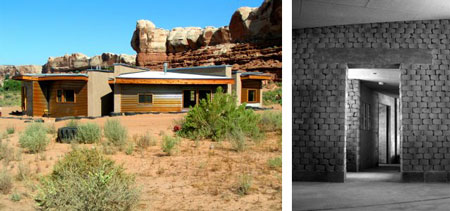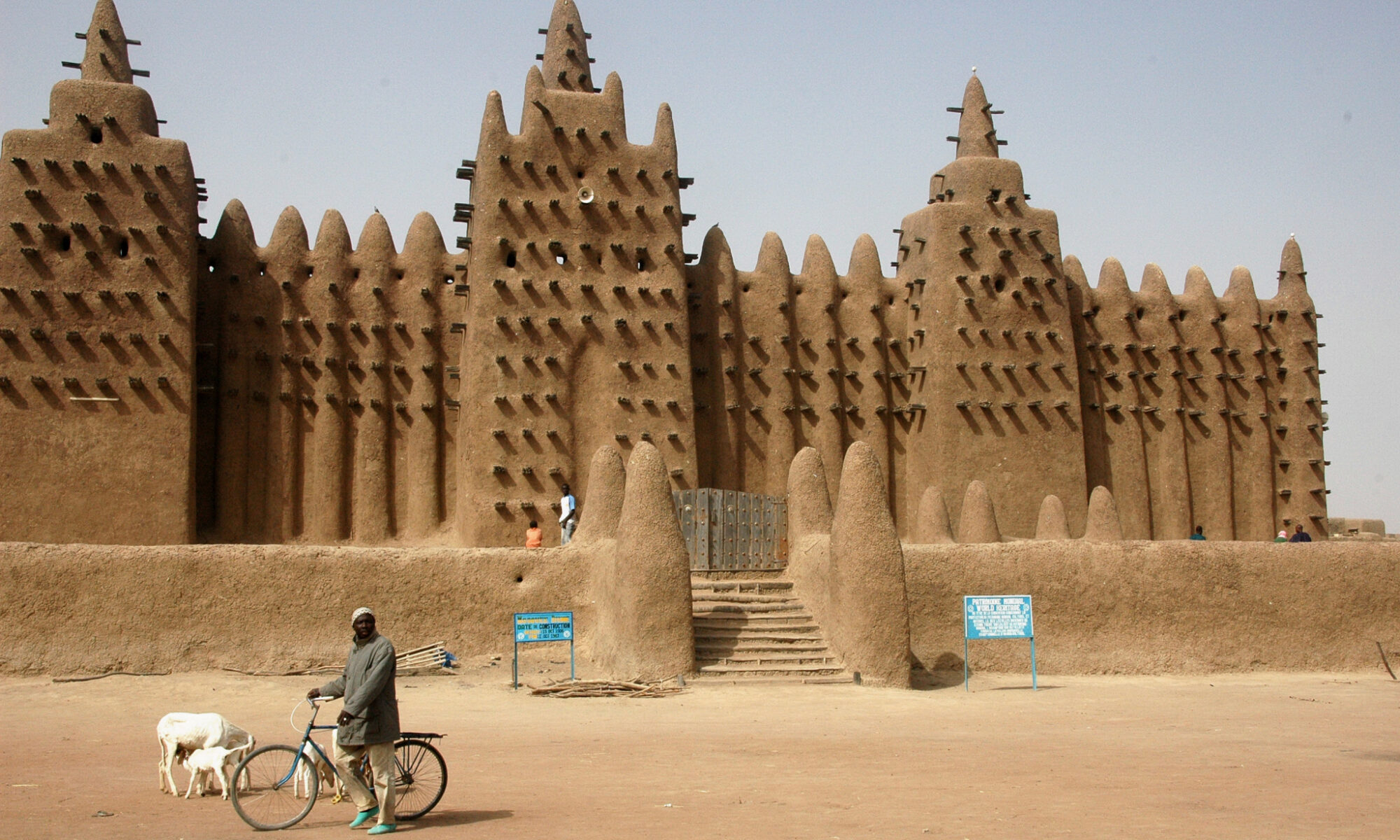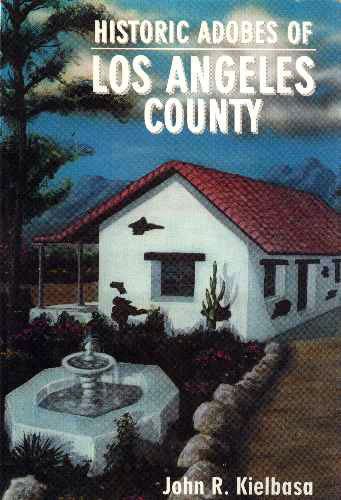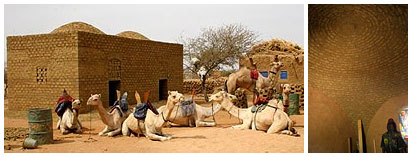
Design Build BLUFF has completed another house. This time a compressed earth block house called the Benally House. Visit the project blog to learn about the entire construction process. [ previously ]

Architecture, Art, Design, and Culture using of mud, clay, soil, dirt & dust.

Design Build BLUFF has completed another house. This time a compressed earth block house called the Benally House. Visit the project blog to learn about the entire construction process. [ previously ]

The book, Historic Adobes of Los Angeles County, documents the numerous eighteenth and nineteenth century adobe houses that are still standing in the metropolitan Los Angeles County area. An accompanying website offers insight to the books content, with an annotated table of contents that summarizes each section of the book and includes maps that allow for your own tour the 76 extant historic adobe structures in the greater Los Angeles metropolitan area.
According to this essay, the oldest mud brick structure in the world is the ceremonial enclosure of Khasekhemwy–Hierakonpolis.
Is there evidence of older buildings? What are they?
According to Wikipedia, “The earliest use of mudbricks was in the Near East during the Pre-pottery Neolithic B period,” which is between ca. 9600 and ca. 8000 BP
Is this the oldest? If not, how long has mud brick been in use?
Start a discussion in the comments section below.
Wikipedia notes:
“The Chinese were already familiar with the techniques of wall-building by the time of the Spring and Autumn Period, which began around the 8th century BC. During the Warring States Period from the 5th century BC to 221 BC, the states of Qi, Yan and Zhao all constructed extensive fortifications to defend their own borders. Built to withstand the attack of small arms such as swords and spears, these walls were made mostly by stamping earth and gravel between board frames.”
Is the Great Wall the oldest mud brick building in the world? If not, what is?
This article states:
“The year 2000 was to see the discovery in Lianyungang, Jiangsu Province of a township site of the Longshan Culture (c.2310-1810 BC). With its double encircling walls this find is further confirmation that the history of city building in antiquity can be traced back in China to the late Neolithic Age. The Longshan Culture is characterized by its burnished black pottery, examples of which were first unearthed in Longshan, Shandong Province in 1928. The Lianyungang site offers an insight into ancient building techniques through its finds of rammed earth foundations.”
Is this the oldest historical evidence of rammed earth? If not, how long has rammed earth been in use?
Start a discussion in the comments section below.
The Adobe Alliance, a Texas based non-profit organization whose aims include to apply cooperative building techniques in earth architecture is seeking a resident intern to work in Santa Fe, New Mexico or from a distance. Responsibilities will include research, image scanning, simple bookkeeping, assisting with workshop organization, website maintenance, and telephone management. The ideal person is a graduate student in architecture, art/art history, public policy or related fields. To learn more, please contact Ms. Simone Swan at simoneswan@gmail.com or visit www.adobealliance.org
Rammed Earth is for Everyone posts Rammed Earth videos from YouTube.

Woodless construction is an approach to building in the sahel that uses traditional building techniques to build houses entirely out of mud, including the roof. Such houses save on scarce wood, encourage local industry by using local skills and materials, and provide good internal comfort, staying warm in cold season, and cool in hot season.
The oldest house in Palo Alto, California is a 160-year-old building constructed of a unique hybrid system that combines techniques found in rammed-earth and cob, traditionally known as encajonado. Known as the Juana Briones House, this historic work of earthen architecture is now slated to be demolished. After nine years of legal battles, the city of Palo Alto has agreed to issue a demolition.
Alternative Construction: Rammed Earth & Modular Contained Earth is a 3-hour interactive online course examines the systems and materials associated with alternative construction, including scenarios on the uses of rammed earth and modular contained earth. It discusses their histories, environmental impacts, and construction methods. This is part of a series of courses concerning Alternative Construction: Contemporary Natural Building Methods.
![]()
Abari is a not-for-profit organization that examines, encourages, and celebrates the vernacular architectural tradition of Nepal. Much of that tradition includes the use of mud brick as seen traditionally in Eastern Kathmandu and in their recent Gobi Adobe project.